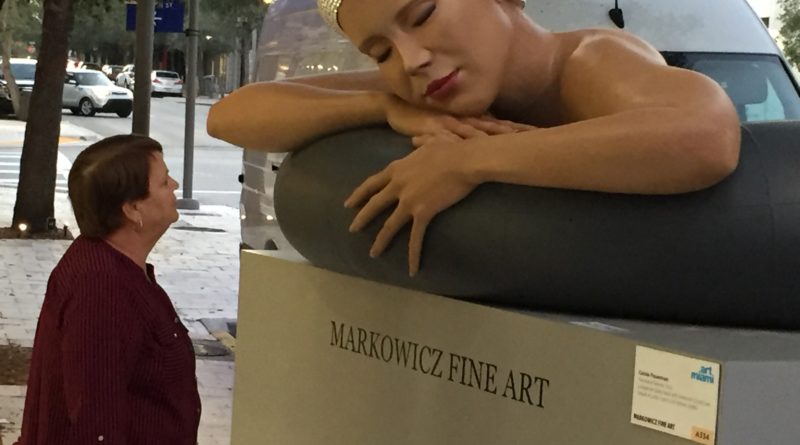Arts, wellbeing and emotions
“Maybe I talked to her because she seemed to be alive and listening, but the reality is that I was talking to myself. I felt very satisfied” said a passer-by when she stumbled upon a peculiar sculpture in an area of the city of Miami, in Florida.
The passer-by, who did not want to identify herself, spoke for a few seconds to a work by New York artist Carole Feurman placed on the sidewalk in front of the doors of Markowitz Fine Arts in the city. Feurman is one of the most recognized hyperrealist authors in the world.
The incident is not an isolated anecdote.
Over recent years, there has been a growing understanding of the impact that taking part in the arts can have on health and wellbeing.
Scientists who develop studies about human well-being believe that arts can improve the health of people who experience mental or physical health problems.
“Engaging in the arts can promote prevention of disease and build wellbeing. The arts can improve healthcare environments and benefit staff retention and professional development”, affirms one of those studies published on the Internet.
There are many different ways in which this work is described (in health, for health, and health) but essentially they are all about the effect that active engagement can have on the health and wellbeing of individuals and communities.
Arts, health and wellbeing are old friends. The experts in the subject include arts therapists, researchers and curators who manage arts programmes in hospitals. There are also many individuals and organisations who work in the community providing arts opportunities to people experiencing ill health.
Other artists and arts practitioners work in medical schools, with architects and in the field of health promotion.
.
“Getting involved in the arts provides both social and creative outlets for people who are ill – either with physical health issues or mental health issues.
Many care homes, GP surgeries and hospitals as well as community settings provide opportunities for people to engage with the arts as a tool to improving their wellbeing” It is another conclusion of the numerous worldwide studies about it.
For example, arts therapists are registered with the Health Professions Council in London and are accredited forms of therapy which use the art as their primary form of communication.
The therapies include drama, music and visual art. Also have now become an established psychotherapeutic tool for used by qualified therapists with clients, usually on a one to one basis.
There is now a growing body of evidence demonstrating that participation in the arts and access to a range of opportunities can dramatically improve health outcomes and increase wellbeing.
One of them is that arts and health initiatives are delivering real and measurable benefits across a wide range of priority areas for health.
Cultural Wellness may be defined as the behaviors, values and beliefs shared by a group of people, such as an ethnic, racial, geographical, religious, gender, class or age group.
Culture plays an important role in how people of different backgrounds express themselves, seek help, cope with stress and develop social supports.
And they come to achieve well-being.
Wellnesss Destiny





